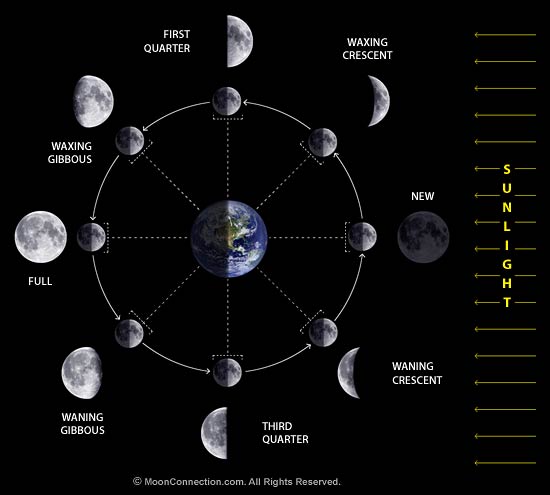Different phases of the moon:

This video shows the different phases of the moon like full moon, new moon, waxing crescent, waning gibbous, first quarter, last quarter, waxing gibbous, waning crescent. The video would be very useful to show in the classroom. This video would show the students the different phases of the moon through talk and pictures. By showing the picture of the different phases of the moon and showing the change in size and talking about each phase of the moon will help students to understand the phases of the moon better. This video also has a kid like verge to explaining about the moon and a catchy beat to help the students remember the different phases of the moon. It is important for students to know the different phases of the moon.This video will help students remember the order of the phases of the moon. This video would be helpful when talking about the moon which I anticipate to do after the solar system if it (the moon and the moon phases) are not included when talking about the solar system.
This video is about the phases of the moon. This talks about the facts about the moon and its phases and how we see the moon from Earth. There is text, pictures, and talk about the moon and the phases of the moon and explains why the phases of the moon occurs. This video talks about the relationship between the moon, Earth, and sun and how this relationship affects the moon. It talks about how we see each phase of the moon depending on the sun, earth, and the light the moon gets from the sun. This video is helpful to explain the phases of the moon and how these phases occurs. I thought that it is important for my students to know about the phases of the moon and the moon cycle. This video gives a great way to remember the difference between waning and waxing. If the moon makes a lowercase b it is in a waxing phase but if the the moon makes a lowercase d it is in a waning phase. This video was very helpful to give the facts to why each phase occurs for the moon and how each phase occurs for the moon. This video was very helpful to learn that trick about the b and the d as compared to with the moon. This video is a very informative video about the moon and the phases and will help the students understand the phases of the moon and how the moon has a relationship with the sun and the Earth. This video will be helpful to explain why the moon is darker in come phases and brighter in other phases. This will be helpful for when I am a teacher and I want to teach my students about the phases of the moon. I would use this for third grade and upper grades. This video is a very good tool to use in the classroom and I am glad I found this video. I definitely use this video when I teach the phases of the moon which will probably be included with the solar system but if it is not then I will teach the phases of the moon and about the moon which this video talks about right after I teach about the solar system.
No comments:
Post a Comment